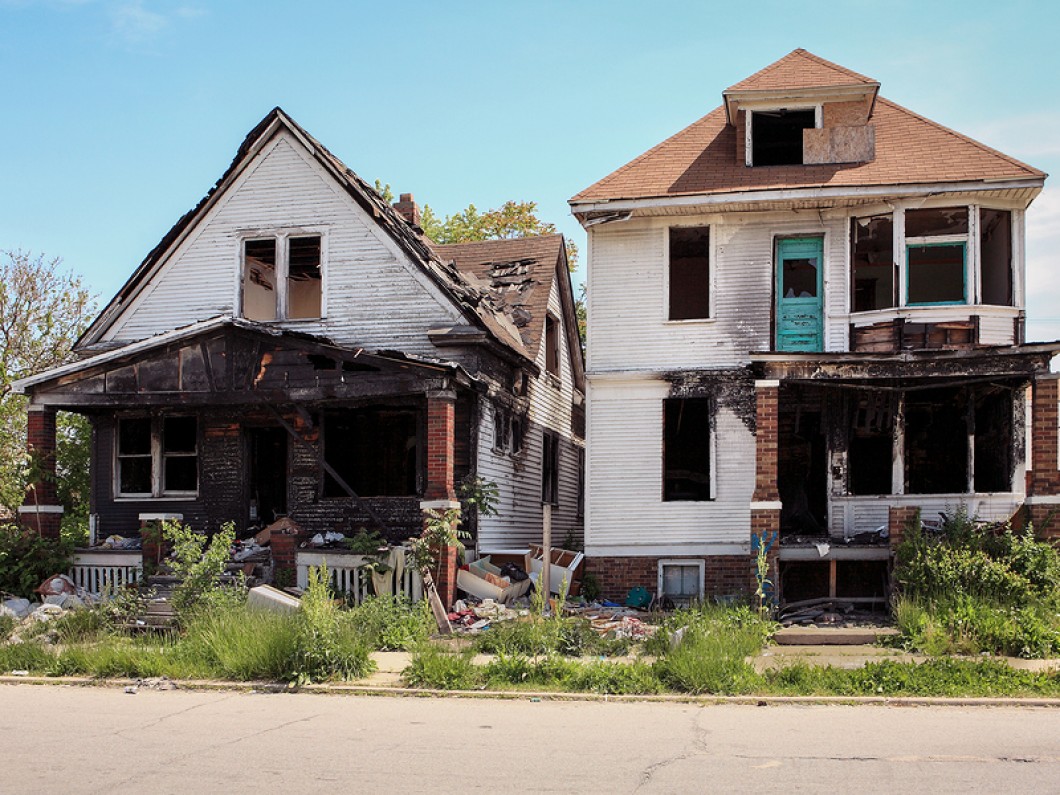When unexpected disasters strike in Colorado Springs, home and business owners discover just how essential Property Damage Restoration Colorado Springs can be. Whether it’s a burst pipe flooding a basement or a lightning-induced fire scorching drywall, swift action prevents minor issues from becoming catastrophes. Recognizing the early warning signs empowers property owners to call restoration specialists before health hazards or structural failures set in. This blog explores the top indicators that signal the need for professional intervention.
What is emergency property restoration in Colorado Springs?
Property Damage Restoration Colorado Springs refers to the rapid mobilization of trained technicians and specialized equipment to address severe property damage. Flooding from a broken water main or a sudden storm can wreak havoc on flooring, electrical systems, and the household environment within minutes. Emergency property restoration services stabilize the situation by extracting water, securing the structure, and drying affected areas to halt mold growth and prevent further deterioration.
Beyond just cleanup, certified teams follow industry standards set by the Institute of Inspection, Cleaning and Restoration Certification (IICRC) and the Restoration Industry Association (RIA). By leveraging thermal imaging, moisture meters, and high-capacity dehumidifiers, professionals accurately pinpoint hidden moisture pockets and ensure thorough remediation. Emergency property restoration in Colorado Springs combines prompt response, technical expertise, and safety protocols to restore properties to their pre-damage state.
Why should homeowners watch for water stains on ceiling or walls?
Water stains on ceiling or walls often represent the first visible sign of hidden moisture issues. These discolorations can range from faint yellow patches near plumbing fixtures to dark, irregular splotches beneath a leaking roof. Over time, water saturates drywall or plaster, causing the material to warp, crumble, or develop a musty odor that signals mold development.
Persistent ceiling stains may indicate a slow, steady drip from a compromised pipe joint or a failed valve in an upstairs bathroom. Walls that feel damp to the touch could suggest water intrusion from exterior foundation cracks or burst irrigation lines. Addressing these warning signs quickly protects against structural weakening, mold infestation, and potential health hazards linked to indoor air contamination.
In many cases, property owners mistake water stains for cosmetic blemishes, only to discover severe damage once the materials begin to fail. Engaging a professional early—before significant restoration is required—can save thousands of dollars in repair costs and safeguard occupant health.
Consider diving deeper into best practices with our Property Damage Restoration Guide, which breaks down each step from initial assessment to final reconstruction.
How can you recognize smoke or soot damage indicators?
Smoke or soot damage indicators show up in various forms: dark streaks on walls, a black film coating appliances, or sticky soot residue in hard-to-reach corners. Even after a fire’s flames are extinguished, the acidic byproducts of combustion can corrode metals, stain fabrics, and erode paint. Smoke tends to follow air currents, infiltrating HVAC ducts and spreading to unaffected rooms.
Recognizing the signs involves more than spotting black soot. A lingering chemical odor—often described as acrid or pungent—signals smoke molecules embedded in carpet fibers, upholstery, and wallboard. Homeowners might notice discoloration on ceiling fan blades or curtains, which suggests the need for comprehensive cleaning and deodorization.
Left unchecked, fire damage can advance beneath the surface, leading to hidden structural issues. Soot particles are microscopic and can remain suspended in air, creating respiratory hazards. Calling in certified technicians equipped with dry-cleaning sponges, HEPA vacuum systems, and ozone generators ensures complete removal of smoke residues and restoration of indoor air quality.
If you need urgent assistance, consider our 24/7 emergency restoration Colorado Springs services to address smoke and soot damage around the clock.
What health risks does mold smell in home Colorado Springs signal?
A persistent mold smell in home Colorado Springs is often described as musty, dank, or earthy—and it can indicate dangerous mold growth behind walls, under floors, or in crawl spaces. Mold spores thrive in moist environments, particularly after water intrusion from storms, leaks, or high indoor humidity.
Health risks associated with mold exposure include sneezing, coughing, itchy eyes, and skin irritation. In sensitive individuals—such as children, the elderly, or those with compromised immune systems—prolonged exposure may exacerbate asthma, bronchitis, and other respiratory ailments. Certain strains, like Stachybotrys chartarum (black mold), can release mycotoxins that cause severe health concerns if left unaddressed.
Professional mold remediation goes beyond simple cleaning. It involves containment of the affected area, removal of contaminated materials, thermal fogging to neutralize airborne spores, and ensuring proper airflow and dehumidification to prevent recurrence. Recognizing the mold smell early and acting decisively protects both property integrity and occupant well-being.
For a personalized assessment and remediation plan, Contact us today and say goodbye to mold odors for good.
How does storm and wind damage affect property integrity?
Colorado Springs’ location at the foot of the Rocky Mountains exposes properties to sudden thunderstorms, hail, and high-velocity winds. These elements can lift shingles, break windows, and strip siding, allowing rainwater to infiltrate attics and walls. As water gathers, it compromises insulation and weakens structural timber.
Roof damage often remains unseen until interior leaks appear as water stains or dripping ceilings. Wind-driven rain can drive moisture into vulnerable wall assemblies, leading to hidden rot and mold. Downed trees may puncture roofs or fences, creating entry points for wildlife and further weather exposure.
Timely repairs by storm restoration experts involve tarping exposed areas, clearing debris, and conducting moisture mapping to identify saturated zones. Structural drying and dehumidification follow debris removal, ensuring lumber and drywall are properly dried. Investing in proactive inspections after severe weather reduces the risk of long-term deterioration.
Common Property Damage Types and Signs
| Damage Type | Key Indicators | Urgency Level |
|---|---|---|
| Water Intrusion | Water stains, damp walls/ceilings | High |
| Fire & Smoke | Soot on surfaces, lingering odor | High |
| Mold Growth | Musty smell, visible spots | High |
| Storm & Wind | Missing shingles, broken windows | Medium to High |
| Structural Issues | Cracks, sagging beams, uneven floors | Medium |
Why hire professionals for property damage restoration in Colorado Springs?
Expert restoration teams bring specialized training, advanced equipment, and industry certifications—like IICRC Water Restoration Technician (WRT) and Fire and Smoke Restoration Technician (FSRT)—to every job. Professionals understand how to navigate insurance claims, document damages, and generate detailed estimates that support coverage approvals.
DIY approaches often miss hidden pockets of moisture or residual soot that continue to degrade materials over time. Restoration firms utilize industrial-grade pumps, centrifugal air movers, and negative-air machines to extract water and exhaust contaminated air safely. They also perform content pack-out and storage, ensuring personal belongings receive the same meticulous cleaning standards.
Furthermore, professional teams adhere to local building codes and environmental regulations, disposing of hazardous mold or asbestos-containing materials responsibly. Hiring experts not only restores properties swiftly but also reduces the risk of future issues, providing peace of mind that comes from certified workmanship.
Below is an overview of response times and restoration methods when engaging professional services:
Response Time vs. Restoration Method
| Response Time | Initial Action | Restoration Method |
|---|---|---|
| Within 1 hour | Emergency tarp, shut off utilities | Secure site, start assessment |
| 1–4 hours | Water extraction, emergency drying | Centrifugal fans, dehumidifiers |
| 4–24 hours | Full structural drying, mold inspection | Thermal imaging, mold testing |
| 24–72 hours | Repairs begin (drywall, flooring, painting) | Full reconstruction |
| Ongoing (up to 30 days) | Final cleanup, odor removal, quality check | Ozone treatments, final inspection |
Professional restoration is an investment in safety, compliance, and property longevity. For unmatched expertise and rapid turnaround, look no further than Top Gun Premier, your local restoration partner.
Frequently Asked Questions
1. What qualifies as emergency property restoration in Colorado Springs?
Emergency property restoration involves immediate response to critical situations such as flooding, fire, mold, and storm damage. Certified technicians stabilize the environment, extract water, contain contamination, and initiate structural drying within hours of arrival.
2. Why should you hire a water damage restoration company in Colorado Springs?
Expert restoration companies have the equipment to remove standing water, dry building materials thoroughly, and prevent mold growth. Their industry certifications and insurance liaison services ensure a seamless recovery with minimal secondary damage.
3. What are the top smoke or soot damage indicators?
Key signs include black or gray soot deposits on walls and ceilings, strong acrid odors in previously unaffected rooms, and corrosion on metal fixtures. Visible smoke staining around HVAC vents also indicates contaminated ductwork.
4. How can I prevent mold growth after water damage?
Promptly removing water, drying all surfaces with dehumidifiers, and maintaining indoor humidity below 50% reduces mold risk. Inspect hidden areas with moisture meters and address leaks immediately to interrupt mold’s life cycle.
5. How quickly should I call a restoration service after a disaster?
Restoration experts recommend contacting services within 1–2 hours of discovering damage. Rapid intervention limits long-term structural harm, prevents mold colonization, and may increase insurance coverage likelihood.
Final Words
Property Damage Restoration Colorado Springs specialists stand ready to safeguard your home or business from water, fire, mold, and storm-related threats. When early warning signs emerge—whether water stains on ceiling or walls, smoke or soot damage indicators, or that lingering mold smell in home Colorado Springs—calling trained professionals makes all the difference. Trust Top Gun Premier for comprehensive, certified restoration solutions that restore both your property and peace of mind.

